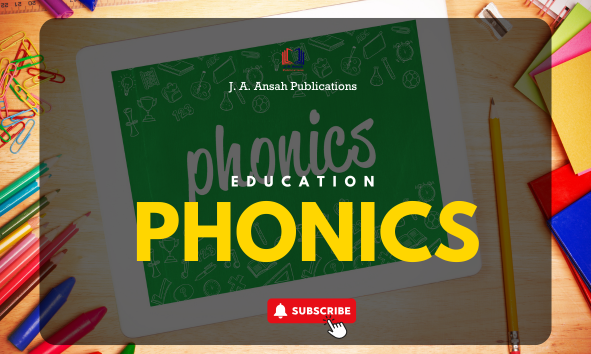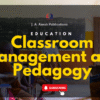Phonics
Introduction
Phonics is a method of teaching reading and writing that focuses on the relationship between letters and the sounds they represent. It helps learners understand how to decode words by sounding out individual letters or combinations of letters. Phonics is essential in early childhood education and is widely used to help children develop foundational literacy skills.
Definition of Phonics
Phonics is the study of the sounds made by individual letters or groups of letters and how they combine to form words. It is a systematic way of teaching learners to recognize and associate sounds with written symbols.
Importance of Phonics
1. **Foundation for Reading**: Phonics provides learners with the basic skills to decode and understand words.
2. **Improves Pronunciation**: It helps children correctly pronounce words by understanding letter-sound relationships.
3. **Enhances Spelling**: Phonics teaches students how to spell words based on sounds and letter combinations.
4. **Boosts Reading Fluency**: By decoding words quickly, children become more fluent readers.
5. **Builds Confidence**: Children feel more confident in reading and writing when they can recognize words and sounds.
6. **Supports Vocabulary Development**: By learning sounds and words, students build a broader vocabulary.
Types of Phonics
1. **Synthetic Phonics**: Learners are taught to convert letters or letter combinations into sounds (phonemes) and then blend the sounds together to form words.
2. **Analytic Phonics**: Learners analyze whole words to identify letter-sound relationships, rather than sounding out individual letters.
3. **Analogy-Based Phonics**: Learners use known words or word parts to identify new words with similar patterns.
4. **Embedded Phonics**: Phonics instruction is embedded within the context of reading texts, and children learn phonics through real reading experiences.
5. **Onset and Rime Phonics**: Onsets are the initial sounds in words, and rimes are the vowel and letter combinations that follow. Learners learn to blend onsets and rimes to form words.
Phonics Rules
1. **Short and Long Vowel Sounds**: A vowel followed by a consonant is usually short (e.g., ‘cat’), while a vowel at the end of a word is usually long (e.g., ‘go’).
2. **Silent ‘e’ Rule**: When ‘e’ appears at the end of a word, it usually makes the preceding vowel long (e.g., ‘bike’).
3. **Consonant Blends**: Two or more consonants can blend together while maintaining their individual sounds (e.g., ‘st’ in ‘stop’).
4. **Digraphs**: Two letters can combine to make one sound (e.g., ‘sh’ in ‘ship’).
5. **Diphthongs**: Vowel combinations produce unique sounds (e.g., ‘ou’ in ‘house’).
6. **R-Controlled Vowels**: Vowels followed by ‘r’ produce a different sound (e.g., ‘car’, ‘bird’).
7. **Hard and Soft ‘c’ and ‘g’**: ‘C’ and ‘g’ can have hard sounds (‘cat’, ‘goat’) or soft sounds (‘circle’, ‘giraffe’) depending on the following letters.
Steps in Teaching Phonics
1. **Letter Recognition**: Teach children to recognize individual letters and their sounds.
2. **Blending Sounds**: Help learners combine individual sounds to form words.
3. **Segmenting Words**: Teach students to break words into individual sounds.
4. **Recognizing Digraphs and Blends**: Introduce consonant blends and digraphs.
5. **Practice with Word Families**: Use word families like ‘-at’ (cat, bat, sat) to help learners recognize patterns.
6. **Introduce Sight Words**: Teach common words that do not follow phonics rules (e.g., ‘the’, ‘said’).
7. **Reading Simple Texts**: Allow students to apply their phonics knowledge by reading short passages or stories.
Activities for Teaching Phonics
1. **Letter Sound Games**: Use flashcards or songs to teach letter sounds.
2. **Blending Practice**: Use magnetic letters or tiles to practice blending sounds to form words.
3. **Word Sorts**: Group words based on specific sounds or patterns.
4. **Phonics Bingo**: Create bingo cards with letters, digraphs, or words for practice.
5. **Story Reading**: Encourage children to read simple books that emphasize specific sounds.
6. **Writing Practice**: Have students write words based on sounds they hear.
7. **Rhyming Games**: Use rhymes to help students recognize sound patterns in words.
Conclusion
Phonics is a critical tool for teaching children how to read and write. It helps learners develop essential literacy skills by understanding the relationship between letters and sounds. By using systematic instruction, engaging activities, and consistent practice, teachers can help students become confident and fluent readers.



